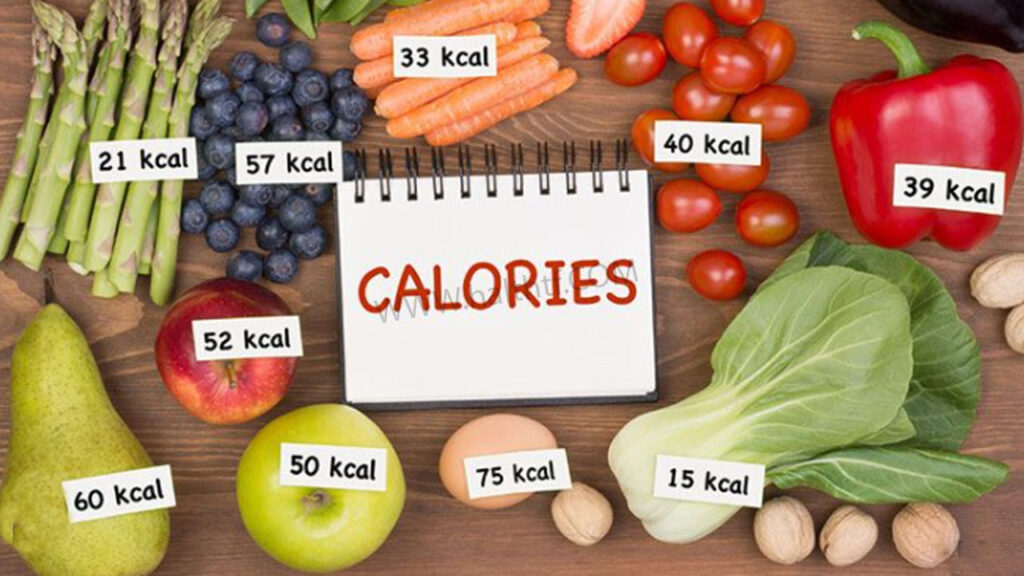Counting calories is a very simple way to manage your weight, energy levels, and overall health. A calorie is a measure of energy your body derives from food and drink to perform such vital functions as breathing, digestion, circulation and physical activity. Understanding how many calories your body uses each day can help you keep weight off, or lose or gain it in a safe manner.

Caloric requirements differ among individuals depending upon age, sex, weight, height, and activity level. For instance, an average adult woman will want to consume between 1,800 and 2,200 calories per day; an average adult man should be aiming for 2,200–2,800. People with high activity level or athletes need more amount of calories to fulfill the energy requirement.
To determine your individual daily calorie requirements, such tools as your Basal Metabolic Rate (BMR) computed in conjunction with an activity multiplier may be used to get your targeted goal. It is worth remembering that not all calories are created equal: Calories derived from whole, nutrient-dense foods such as fruits, vegetables, lean protein, and whole grains are more health-supporting than the same number of calories that come from processed or sugary foods.
Tracking calories may help with identifying habits, controlling portions and reaching weight goals. For best results, combine it with a healthy diet and regular physical activity.
Caloric Deficit: What to Know
Caloric deficit is what happens when you take in fewer calories than your body needs to use as energy. The Basics This is the basic weight loss principle behind every successful strategy because the body cannot store fat if it does not have enough calories, so it must use stored fat for fuel, which means weight loss over time.
It’s possible to create a caloric reduction from a diet, exercise, or a combination of the two. For instance, not taking an additional 300 to 500 calories per day in combination with more physical activity can lead to a safe weight loss of one or two pounds a week. Small changes are more realistic than going all out, and going all out can lead to loss of muscle mass, nutrient deficiencies, or weight rebound.
It is still important to ensure you’re eating enough when the restriction of calories is involved. Cluster on protein-rich items, whole grains, fruits, vegetables and healthy fats to keep your body receiving important nutrients. Plenty of water and adequate rest also support metabolism and energy levels.
Caloric restriction must be individualized and moderate, based on age, sex, activity and health status. A health care provider or dietitian can help customize a plan safely.
Done right, a caloric deficit results in slow, steady weight loss with no adverse effects on energy, muscle mass, or long-term health.
How Many Calories Are in Your Drink?
Liquid calories are often forgotten, but added sugars from drinks can really add up over time. Sugars and fats are hiding in countless beverages including sodas, juices, specialty coffee and teas, alcohol and smoothies. A few extra drinking calories run you one-hundred to a few hundred a month which then quickly leads to weight management problems and bad health.
For instance, a regular 12-ounce soda contains about 150 calories, nearly all of which are from added sugar, and a medium flavored latte can deliver 200–300 calories or more, depending on the type of milk and the number of flavored syrup pumps. Even seemingly good-for-you drinks like (all-natural) fruit juice can pack on sugar and still leave you hungry with no fiber to be found. Alcohol – Beer, wine, and cocktails are another staple of empty calories, often totaling more than 200 calories per drink.
For handling liquid calories, choose water, sparkling water, unsweetened teas, or, if you need a little buzz, black coffee to keep calories low. If opting for juices or smoothies, pay attention to portion sizes and added sugars. Even tiny changes — like dumping a cup of soda in favor of a glass of water — can add up to big calorie savings over the long run.
Counting your beverage calories can be easy, but it’s important not only for your weight, but your blood sugar and health in general. What you drink is as important as what you eat.
Very Low-Calorie Diets: What You Need to Know
Week 1T What is a VLCD? A VLCD is a special low-calorie diet that provides up to 800 calories per day, significantly lower than the daily average requirement of 2,000 & 2500 calories for the average woman & man. VLCDs may be prescribed without medical supervision for people who are severely obese or for those with weight-related health problems who have been unable to lose weight by other methods.
VLCDs are effective for quick results, but posses a number of associated risks if not kept under control. Very low calorie intake can cause nutrient deficiencies, fatigue, muscle loss, dizziness, gallstones and electrolyte imbalances. Sustained use without supervision is advised against as metabolism can be inhibited and it may be challenging to maintain weight loss.
VLCDs frequently use a type of meal replacement that is a product designed to support individuals follow diets of very low calorie intake Meet We offer medically-formulated meal substitutes, including shakes, soups and bars, in a range of flavours that have been created to provide the essential vitamins and minerals, without the potential for nutrition deficiency. Supervised programs also generally involve medical monitoring, exercise instruction and a gradual return to normal foods for safety.
For most of us, moderate calorie cutting + proper diet + physical fitness is the safer and more sensible approach. VLCDs are appropriate in some medical contexts, but someone should not try one of these diets without a professional’s involvement. I am of the opinion that long term weight reduction is facilitated by lifestyle changes, not by extreme deprivation.


